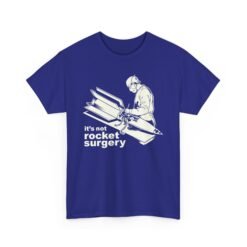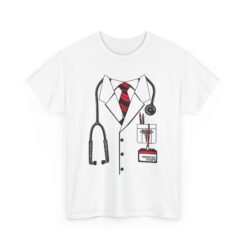American History, History, Medical History, Weird History
Bite the Bullet: The Origins of Battlefield Anesthesia and Its Lasting Impact
Introduction to Battlefield Anesthesia
Battlefield anesthesia refers to the medical practices employed to manage pain and facilitate surgical procedures for injured soldiers during warfare. Historically, the significance of effective pain management on the battlefield has been profound, directly influencing not only the survival but also the morale of troops engaged in combat. Pain relief is crucial in high-stress environments, where injuries are common, and immediate medical attention can mean the difference between life and death. The development of battlefield anesthesia has evolved considerably over time, reflecting advancements in medicine and understanding of pain management.
In earlier conflicts, soldiers often faced surgical procedures without any form of pain relief. This lack of anesthesia led to traumatic experiences, as surgical interventions were performed on conscious patients in extreme conditions. Techniques varied, including the use of alcohol, opiates, and local anesthetics, though these methods fell short of providing adequate relief. The brutality of war necessitated a reevaluation of these practices, prompting innovations aimed at improving the care available to the wounded.
The phrase “bite the bullet” is believed to have emerged from this context, signifying the resilience required by soldiers to endure painful procedures. It captures the essence of enduring hardship in the face of adversity. This common saying reflects a historical snapshot of how medicated interventions were often crude, and soldiers had to summon immense fortitude in the absence of advanced anesthetic techniques. As military medicine progressed, the integration of more effective anesthesia became an essential component of battlefield care, paving the way for modern practices that save countless lives. Understanding the origins and evolution of battlefield anesthesia is integral to appreciating its lasting impact on both military history and medical practice.
The Birth of the Phrase ‘Bite the Bullet’
The expression ‘bite the bullet’ has rich historical roots that trace back to the agonizing experiences of soldiers undergoing surgery during wartime. The phrase is believed to have originated in the 19th century, particularly in the context of military hospitals where injured soldiers needed to endure painful procedures without the benefit of modern anesthesia. In these desperate situations, soldiers were often instructed to bite down on a bullet to help manage their pain. This act served as both a practical and psychological coping mechanism, allowing them to focus on the task at hand rather than the intense suffering they were experiencing.
Historically, battlefield medicine was quite rudimentary. In many cases, the only available options for pain relief included alcohol or the simple act of clenching a bullet between the teeth. This stark reality highlights the evolution of medical practices, with many soldiers enduring amputations and other severe procedures while relying on their sheer willpower. As medical professionals recognized the need for effective pain relief, this phrase began to permeate the cultural vernacular, symbolizing the act of facing hardships with courage and resignation.
Literary references to ‘bite the bullet’ can also be found in the works of renowned authors, further cementing its place in the English language. Over time, the phrase has evolved beyond its battlefield origins to encompass a broader meaning. Today, it has come to signify the act of confronting difficult situations or making challenging decisions with determination and resolve. This transformation reflects not only the changes in societal attitudes towards pain and suffering but also the progression in medical advancements. Consequently, while the phrase may originate from a poignant period in history, its lasting impact resonates in contemporary discourse, encouraging individuals to face adversity head-on.
Anesthesia in Military History
The history of anesthesia within the context of military operations is both intriguing and essential to understanding the evolution of pain management practices during times of conflict. Long before the development of modern anesthetic agents, various methods were employed by military personnel to mitigate pain associated with injuries sustained on the battlefield. Ancient civilizations often turned to herbal remedies, utilizing plant-based concoctions to ease suffering. For instance, soldiers in ancient China and India would use opium and other local anesthetics, providing a rudimentary form of pain relief when faced with traumatic injuries.
Moreover, the role of hypnosis should not be overlooked. Techniques of suggestion and mental focus were sometimes employed by battlefield medics as a means of achieving analgesia. In the absence of chemical anesthesia, practitioners would attempt to relax patients psychologically, allowing for certain minor surgical interventions to be performed without the use of pain relief. This reliance on psychological techniques illustrates the ingenuity of early medical practitioners in the most dire circumstances, as well as the inherent necessity to address pain even when resources were limited.
The evolution of anesthesia highlights the importance of innovative solutions to the challenges of wartime medicine. Through the integration of various techniques, from herbal remedies to the more systematic approaches of the 19th century, the medical practices deployed in military contexts laid the groundwork for modern anesthesia and its ongoing significance in providing care to injured soldiers.
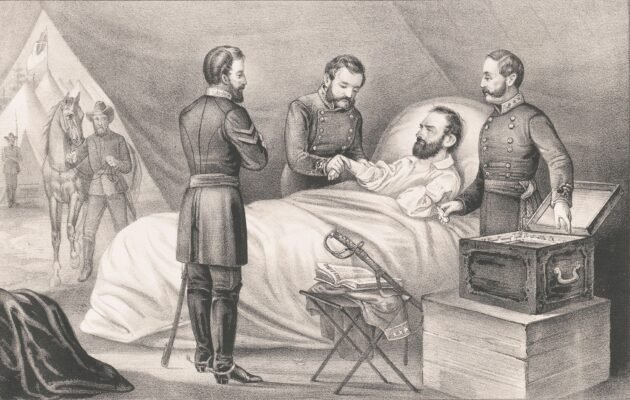
Innovations in Battlefield Medicine
Throughout history, the need for effective medical interventions in battlefield settings has spurred remarkable innovations in battlefield medicine. The exigencies faced by medical personnel attending to injured soldiers have necessitated the rapid development of surgical techniques and anesthetic agents, ultimately transforming the landscape of wartime healthcare. These advancements are not only critical for immediate care but also have lasting implications for the future of medical practices in various environments.
Among the most significant developments in surgical techniques during wartime have been the introduction of triage systems and the advancement of minimally invasive procedures. Triage, which categorizes patients based on the severity of their injuries, allows medical teams to prioritize the most critical cases, ensuring that those in desperate need of care receive it promptly. Additionally, the evolution of techniques such as debridement and tourniquet use has improved survival rates and outcomes for wounded soldiers by minimizing complications and controlling hemorrhage effectively.
Equally important are the advancements in anesthetic agents, which have revolutionized the soldier’s experience during treatment. Traditional methods of pain management, such as the use of alcohol or opiates, were often inadequate and fraught with risk. The introduction of more sophisticated anesthetics, such as ether and chloroform, provided a greater level of comfort for wounded soldiers. More recently, advances in regional anesthesia techniques, including nerve blocks, have allowed medical teams to perform complex surgical procedures with greater precision and less systemic impact on the patient.
The intersection of surgical innovation and the development of anesthetic agents has significantly improved battlefield medical care, making it less traumatic for injured personnel. These enhancements in battlefield medicine have not only addressed immediate needs but have also paved the way for further advancements in civilian medical practices, highlighting the profound impact of warfare on healthcare development.
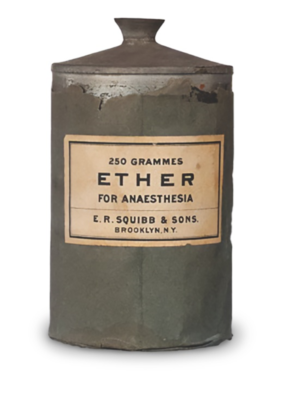
The Cultural Impact of ‘Bite the Bullet’
The phrase ‘bite the bullet’ has accomplished a remarkable journey from its medical origins to a prevalent metaphor found in contemporary language. Originally used to describe the act of enduring pain during surgical procedures without anesthesia, it has become a universal expression for facing difficult realities with fortitude. Its transition reflects a broader cultural shift towards recognizing the importance of resilience in the face of adversity.
In modern usage, ‘bite the bullet’ serves as an encouraging admonition, urging individuals to confront their challenges head-on, despite the discomfort that may accompany such encounters. This metaphor is evident in a variety of contexts, from everyday conversations about work-related stressors to personal struggles, highlighting an essential human quality of perseverance. The phrase has woven itself into the fabric of our daily dialogue, illustrating how historical expressions can be repurposed to maintain relevance in an evolving linguistic landscape.
The impact of ‘bite the bullet’ resonates particularly within popular culture. The phrase has appeared in numerous films, literature, and television shows, often employed to underscore character growth or pivotal moments of decision-making. For instance, one may recall a scene where a protagonist resolves to confront their fears or tackle a daunting task, accompanied by the resonant phrase, capturing the essence of taking a courageous step forward. Additionally, the exploration of this phrase in various art forms showcases its versatility and enduring significance.
By transcending its original context, ‘bite the bullet’ not only symbolizes a collective understanding of enduring hardship but also reinforces the idea that facing uncomfortable situations is a shared human experience. As language evolves, such phrases continue to provide powerful means for expressing resilience in both personal and societal challenges, contributing to a deeper understanding of human determination.
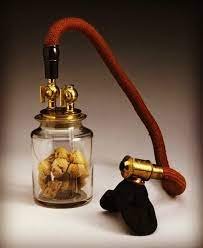
Modern Anesthesia Techniques in Comparison
The evolution of anesthesia techniques from the battlefield to modern medical practices reflects significant advancements in understanding pain management and patient care. Historically, during critical military conflicts, such as the American Civil War, soldiers often resorted to methods like biting down on a bullet to endure excruciating pain during surgeries. The rudimentary nature of these early techniques underscores a stark contrast to the sophisticated approaches available in contemporary medicine.
Today, modern anesthesia encompasses a wide range of techniques and methodologies that prioritize patient safety and comfort. General anesthesia, regional anesthesia, and local anesthesia are three core categories that highlight this evolution. General anesthesia involves the use of inhalational agents or intravenous medications to render a patient entirely unconscious and devoid of sensation, which is a far cry from the crude methods of earlier times. This approach is frequently supplemented by advanced monitoring equipment that ensures vital signs and overall physiological stability are closely observed throughout procedures.
Regional anesthesia allows for the targeting of specific nerves to block sensation in particular areas of the body, such as with epidurals used in childbirth or nerve blocks employed in limb surgeries. This method significantly reduces the need for general anesthesia and provides enhanced pain control while allowing patients to remain awake and aware. Local anesthesia, on the other hand, has become a staple for minor surgical procedures, utilizing agents that numb localized areas without affecting overall consciousness.
Furthermore, the introduction of adjunct medications that alleviate anxiety and boost anesthesia’s efficacy greatly contribute to modern practices. Drugs such as sedatives and analgesics enhance comfort levels, paving the way for improved perioperative experiences. In summary, the journey from battlefield anesthesia techniques to the refined practices of today is a testament to the strides made in medical science, ensuring that pain management evolves to accommodate the complexities of human experience.
Conclusion: Reflecting on History and Modern Resilience
The phrase “bite the bullet” encapsulates a historical moment deeply rooted in the medical practices of warfare, where battlefield anesthesia evolved amidst dire circumstances. This expression, originating from the necessity of enduring pain without relief, serves as a powerful metaphor for resilience and strength in the face of adversity. The challenges encountered in battle, both physical and emotional, reflect a broader narrative about human endurance throughout history.
As we consider the evolution of battlefield anesthesia, it becomes evident how critical advancements in medicine have substantially impacted our approach to pain management today. The historical significance of “biting the bullet” not only illustrates the harsh realities of previous eras but also emphasizes the ongoing quest for effective pain relief. Modern medicine has made great strides in alleviating discomfort, yet this dialogue continues as we explore innovative methods and therapies that cater to individual needs.
Moreover, the notion of resilience extends beyond physical pain—encompassing emotional and psychological challenges as well. Contemporary society frequently grapples with various forms of suffering, and the wisdom of acknowledging pain is crucial to healing. By remembering the sacrifices made by those who came before us, we foster a sense of unity that strengthens our collective resolve to face life’s adversities. Health and strength are intertwined with the narratives we share, reinforcing the critical nature of storytelling in cultural resilience.
In celebrating our past, we honor the resilience embodied in the phrase “bite the bullet.” It compels us to challenge our limits, remain steadfast in our pursuits, and support each other on the journey through pain—both tangible and intangible. By fostering awareness and open dialogue about such experiences, we contribute to a richer understanding of health, resilience, and the stories that shape our culture today.
Funny and Sarcastic
Cult Classic
🏥🖤 Smith’s Grove Sanitarium Unisex T-Shirt – Welcome to Warren County’s Creepiest Institution



